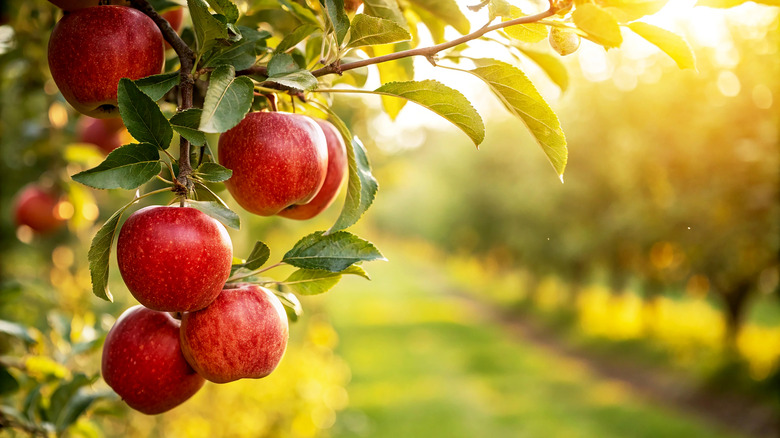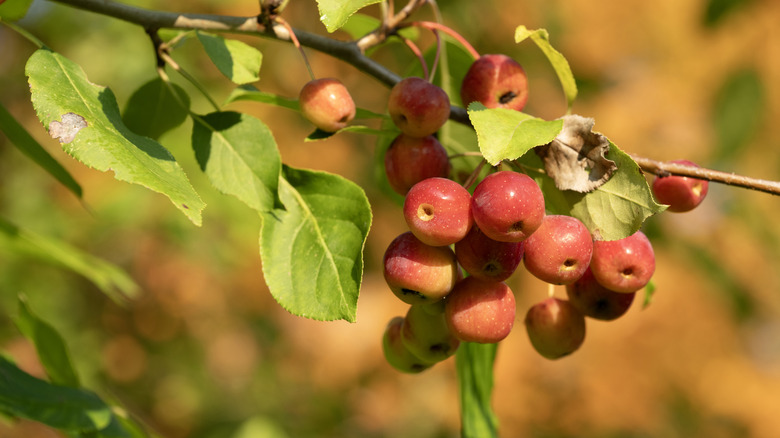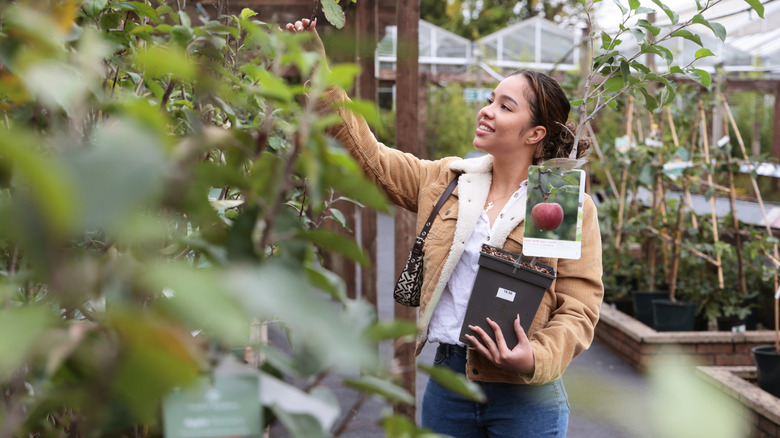The Downside To Growing Your Own Apple Tree That You Should Consider
If your enthusiasm for apples takes you miles in search for the best varieties, that could not only make your tarts delicious but also complete the perfect fall vibe, you might also have thought about growing your own tree at some point. And even though there are lots of merits to bringing a sapling home and caring for it until it starts producing fruit, you should probably avoid growing apple trees from seeds. This is because apples grown from seeds are invariably inferior to the commercial varieties you see in stores—which are grown vegetatively via grafting—both in terms of taste and how they look. In fact, most of the time, you can't predict the quality of your harvest, since apples grown from seeds are not true to the original apple.
Apple trees (Malus domestica) are not self-pollinating. This means that a single apple tree is not enough to produce fruits. Apart from a few varieties such as 'Golden Delicious', apple trees require the pollen of another variety for effective cross-pollination and subsequent fruit production. In fact, even in varieties that are self-fruitful, cross pollination results in more regular fruit production, as well as a heavier fruit set. This means apple seeds cannot be used to reliably reproduce the same quality of apples when they are grown alone.
Cons of growing an apple tree from seeds
Growing an apple tree from seed results in a harvest that is invariably disappointing. This is because of the genetic make up of the apple seed, which contains information from multiple apple trees, thanks to cross pollination. What this means is that even if you plant a seed from the most delicious apple you have ever had, the grown-up tree would be different from the parent in terms of fruit taste, aesthetics, tree size, or hardiness. Most of the time, the apples on trees grown from seed also have a bitter taste.
Moreover, since it takes a long while for an apple seedling to start bearing fruits (at least eight to ten years), the wait is not always worth your while. This is why grafting has always been the go-to method for producing delicious apples. This process involves attaching a scion from a desired apple variety on a rootstock from a different tree to get exact clones of the parent fruit.
Grow at least two trees for a good apple harvest
While growing a single apple tree from seed isn't very productive (unless there is another apple tree present within a distance of a 100 feet), you can still get a good bang for your buck if you purchase two saplings to plant in your yard. This will result in successful pollination and lots of fruits down the road. If you have limited space, you should consider dwarf varieties for your small garden that only grow up to 8 to 10 feet. Dwarfing rootstock sold at the nursery are 50 to 75% the size of standard trees and demand less effort while pruning or harvesting.
When it comes to planting and caring for apple trees (USDA Hardiness zones 4 to 9), keep in mind they like exposure to full sun, but they are not too finicky about the soil type. Nonetheless, before planting the trees, make sure that the soil is well draining because standing water can harm its roots.
Although they can be susceptible to pests, you can avoid a lot of infestation problems by following simple tips and tricks to help the apple trees in your yard thrive, such as ridding the surrounding area of debris, fallen tree leaves, and branches that can invite pests. Keep in mind that apple trees can also be toxic to your pets because of the presence of a chemical called amygdalin in their leaves and stems.


